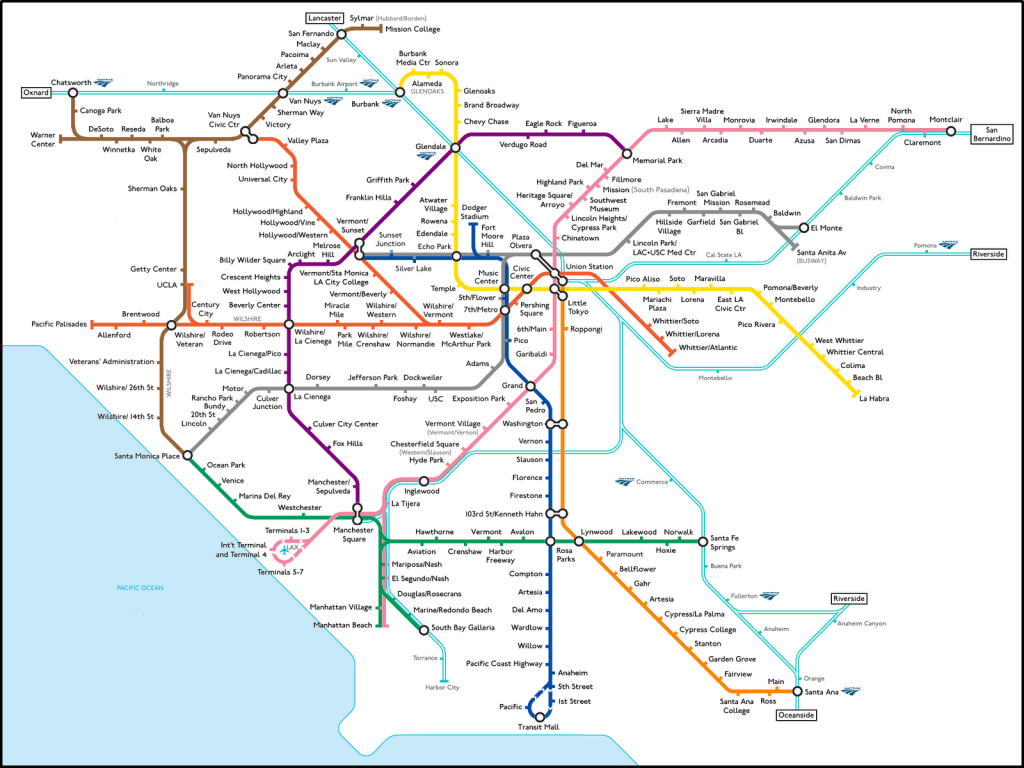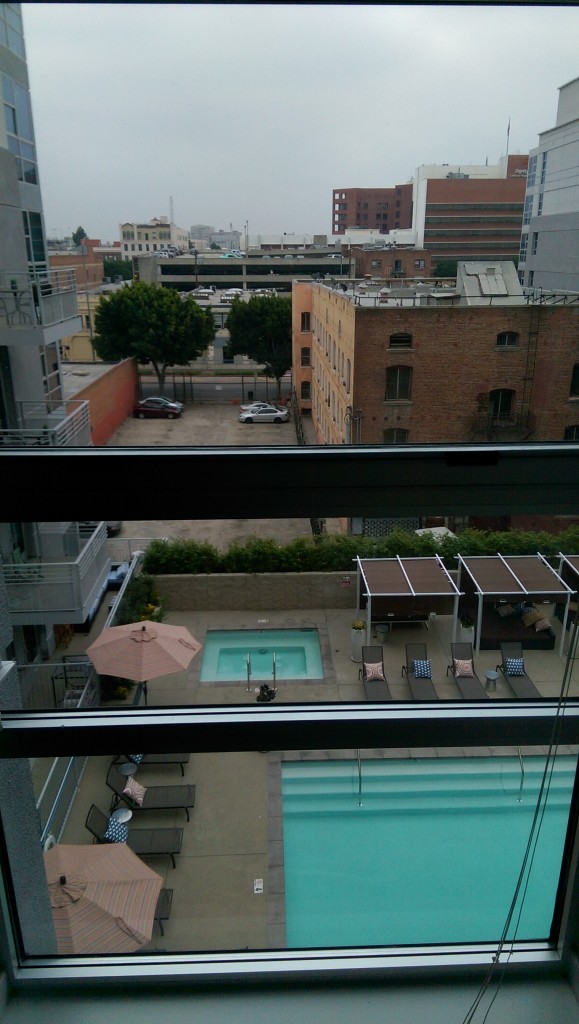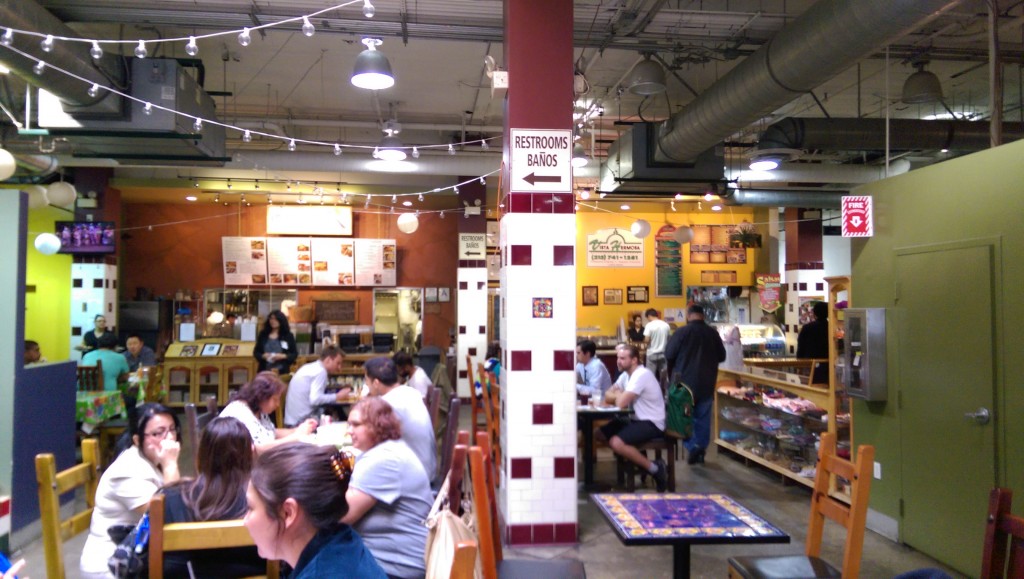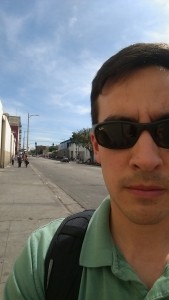It has been more than two days since the LA research team shared stories to and informed the MIIS community of our research on poverty, homelessness, and violence in Los Angeles. Our presentation focused on storytelling and drama (skits), recounting stories told to us and situations we encountered. Sticking with what impacted me most, I spoke about the Metro gentrification of Boyle Heights. Sharing what I have learned and how it affected me with 40+ people consisting of faculty, students, and community members was a way for me to honor the citizens of Boyle Heights. Through me, their voices: their information, their feelings, and their perspectives were being shared hundreds of miles away in Monterey, CA. It was as if those who we spoke with were here in Monterey sharing with MIIS what they originally shared with us.
Then, an audience member suggested that we were gentrifying knowledge from Boyle Heights.
I did not fully comprehend this phrase until the next day. As an educated white male, I understand that I am part of the system that oppresses and gentrifies minority populations. Through my shopping habits, where I live, and my career choices, I am either reinforcing the discriminatory system or changing it to be more inclusionary, fair, and equal to all social, ethnic, cultural, and religious groups. The purpose of our presentation was to share our research, to honor those we met and pass on what they shared with us. However, were we truly passing on their information or stealing it to benefit ourselves? Was this public presentation that was meant to give the attention to LA activists upended by our involvement in speaking upon LA’s behalf? Have I gentrified knowledge from LA?
I have reflected upon these questions throughout the weekend and believe I am at a place to begin answering them. Reflecting on my own motives and intentions, I can honestly say that I intended to represent and pass along Boyle Heights’ plight and their perspectives to raise awareness for their cause. However, even good intentioned out-of-town people who move into a lower income area out of necessity can still be contributing to the gentrification of a neighborhood regardless of their intent. Does my telling the stories of Boyle Heights displace this knowledge from this neighborhood and transfer its ownership to myself? Every time I speak about Boyle Heights, my name will always be attached to this information, these stories, these people. Like an essay’s author becomes associated with and overshadows the sources he/she cites, critics argue that my involvement is doing the same to residents in Boyle Heights.
This of course does not sit well with me. I wish to represent and be an advocate for those we heard. I aim to elevate their voices above my own. I give them credit at every opportunity provided to me. It is about them and not me. These distinctions, I believe, does not absolve me completely of gentrifying knowledge, but clarifies my position. Our goals in telling these stories are the same: Save Boyle Heights. Unless, Boyle Heights’ residents change their positions or stop fighting to preserve their way of life, I am not displacing knowledge from this community. I have not stolen their voice, but am rather a reverberating echo of what they initially proclaimed. Power is strongest always at the source and in this I am confident that their voices will continue to be heard directly from Boyle Heights to speak and work against the structures that remain in place to discriminate and exclude them.
Category Archives: Michael
Post Research Reflection
As I sit in my rented out room in Monterey, CA, I marvel that just yesterday I was 321 miles south in downtown Los Angeles. We truly live in a globalized world where we can travel great distances within a matter of hours. The world is more interconnected than ever before. But now that I am back in Monterey and distanced from everything that I have witnessed this past week, am I done with LA and can I move on with the next chapter in my life? I reflect back on my research last week where I visited Central, South, and East LA. I walked around LA Live where the Staples Center is located, Skid Row where homeless and mentally ill men and women reside, and East LA where communities are being gentrified. All these vastly different places are not exempt from interconnection. Policies in one district affect another. Development in another district can be initiated in a separate district and positively/negatively influence a neighboring district. This cause and effect relationship applies to my life as well. I have been connected to certain parts of LA and my actions here in LA will have an effect on the people we met. Being back in Monterey, I can’t stop thinking about Boyle Heights and the structural violence occurring there.
As you can see from this map, essentially all of LA proper is connected. Work and development on one line or even the creation of a new line will affect the entire network, causing variations in traffic throughout the system. These variations have large implications, impacting vehicle traffic, local businesses who lose or gain customers, or crime rates and health of communities. As I shared in my Day Six Blog, our team experienced the economic impact that the LA Metro can have on a community. Empty Metro owned lots in Boyle Heights has caused social unrest in this neighborhood because residents have been ignored during the development process. The development of this neighborhood by the LA Metro has uprooted local businesses and caused private companies and businesses to take their place, inviting outsiders to come in and take advantage of the low income housing. This is the beginning of gentrification.
I do not wish to repeat what I already blogged about, but I want to ensure that the story of Boyle Heights’ residents is told. I have finished my fieldwork in LA, but my work is not done. I have a responsibility to those who took time out of their busy lives to speak with us and share their stories and regardless of the depth and strength, I feel connected with these people. My focus on Boyle Heights is out of personal interest and respect for the individuals we met. They spoke to raise awareness and I hope that I can amplify their voice through my work here in Monterey.
Gentrification vs Isolation
I am currently sitting in the LAX airport waiting for my flight to San Jose, CA. Yesterday was our last day of work in downtown LA. We visited organizations that worked on rape in prisons, refugee and immigrant torture victims, community education and development, and violence prevention. Although these organizations did great work to help vulnerable populations, I was most impressed with our last stop of the day in Boyle Heights, where we met with local residents and leaders in the fight against the gentrification of their city. These residents/leaders were aware, educated, outspoken, passionate, and frustrated. I could tell that they were fed up with being constantly taken advantage of. They eagerly met with our group to share their life stories and share how their mere existence was a testament of their rebellion against structural violence. I understood their frustration with being exploited and not involved in community development projects.
In all my MIIS classes, whenever we talk about development, we discuss the importance of involving stakeholders and we learn examples of state-sponsored projects coming in to develop various communities without their consent or input. It hit home for me last night that this disregard for human life via disregarding a community’s voice, occurs everywhere in the United States…and on a regular basis. Minority (non-white) populations are uprooted and pushed out of the way in the name of development. Their communities are replaced by housing or public spaces that benefit white populations. Although, this is not absolute, it happens regularly enough where I’m concerned and want to do something about it.
However, I am a graduate student about to graduate in May. I will be entering the job market with around $60,000 worth of debt and will be getting married in the Fall. I am planning on living in the Bay Area, but as I look for housing, I will be looking for affordable housing. Not surprisingly, my choices will be slim and I’ll choose the nicest and most affordable option I can find. This will mean I’ll be living in a diverse community, possibly a Latin American one due to the demographics in the Bay Area. Yesterday’s and this past week’s work in Boyle Heights and makes me wonder if I will be part of the gentrification problem since I will be moving into a lower income area. Soon I will rent in these areas, but soon I will most likely purchase a home. As a white male, will my economic decision displace a Latin American person or family and prevent a minority community from expanding and thriving?
My professor has a policy of owning who you are and being transparent about you as a person. This resonates with me because I wouldn’t be moving into to the areas in order to change them, but rather it will be an economic reason. I will be living in that community and will appreciate the diversity and uniqueness of it. To my credit, I won’t be moving in to change the neighborhood to reflect my interests and my values. However, what happens 10 years down the road when my wife and I have saved up to afford a home together? Will we stay in an underdeveloped area that might have higher crime rates and not as competitive/quality schools? If we do, we’ll advocate for better social services which will raise living expenses and displace those who cannot afford it. Assuming (making gross assumptions) that the minority community are still predominantly poor, they will be the ones displaced and I have gentrified them.
On the other hand, if my wife and I have enough money to move elsewhere for a better living area, we will most likely live in a predominantly white neighborhood, thereby isolating ourselves and living in an ignorant bubble. Neither of these options thrill me. Is it wrong to want the best for my future potential children? If I stay, I gentrify. If I move, I isolate myself and others. I’ll be thinking about this for a while to make sense of it, but feel free to comment if you have an opinion on this.
Day Six: Non-Public Transit
Today we visited Boyle Heights located in East Los Angeles. We met two community actors here working to raise awareness toward and fight against gentrification. One significant sight was Mariachi Plaza, where we visited an empty lot that was fenced off. Normally, I wouldn’t have paid much attention to such a lot, but on a section of the fence were at least a hundred colorful ribbons. These ribbons had various words and phrases and after reading through a few of them, I was able to make sense of them and discover that these were community inputs for what they would like the empty space to become.
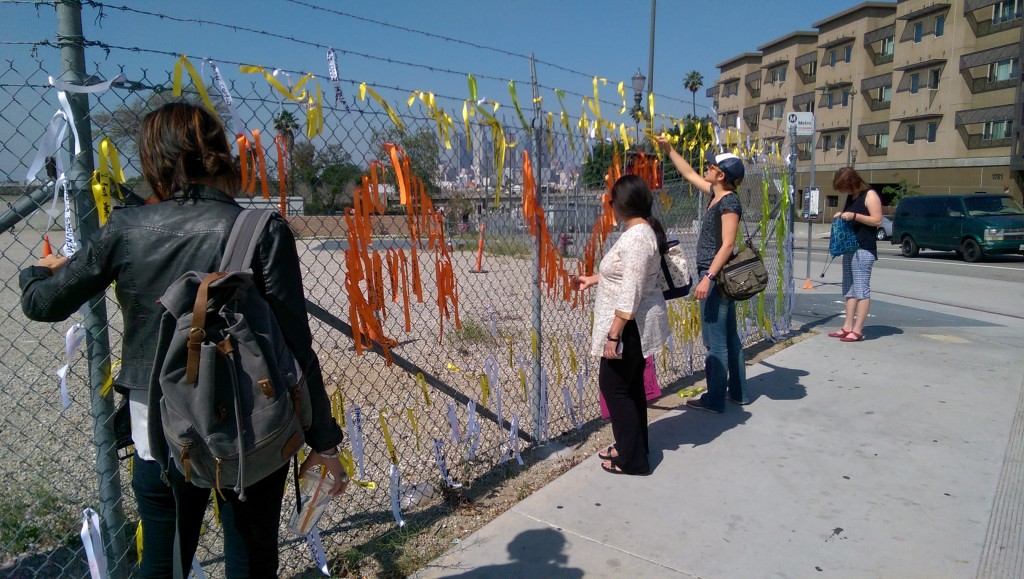
We learned a brief history about this space that this empty lot is owned by the Los Angeles Metropolitan Transportation Authority or LA Metro for short, which is the agency in charge of all transportation in LA. LA Metro has not developed this plot of land for reasons ranging from economics to social discrimination/inequality. Regarding economics, LA Metro has claimed that developing on this land would not be economically viable. They claim that the local community is not the demographic, they cater to. Another reason was that the Metro wishes to create an affordable housing project to assist the local community. However, this “affordable housing” project would base its income qualifications on the median income in all of Los Angeles, which is an annual salary of roughly $80,000- well beyond the means of a Boyle Heights resident.
I believe both of aforementioned reasons. The Boyle Heights district is surrounded by freeways and it apparently is a leading district in particulates in the air. The wind produced by these freeways carries dust and pollution toward the town, which has led to health issues and complications, as well as the creation of a local hospital. Secondly, the economic deprivation in this district reinforces the attempted gentrification by housing developments, neighbors, and the government. Most landowners in Boyle Heights are approached by development agencies who offer the landowners cash for their properties. For a poor household these offers are very attractive since they have never been anything but poor. This cash purchase allows for a quick and tempting option for landowners, where they could move out of this expensive area and live wealthily in another area. Landowners’ second option is to refuse the offer and to remain poor in their strongly knit communities, yet strive against gentrification and work toward improving their lives in the long run.
I was quite taken aback when I heard that the company that was handling this development project was government run. The first words that come to mind when I think of public transit are affordable, inexpensive, and great for sporting events. However, from today’s Boyle Heights’ speakers depicted, the Metro was described as a pro-gentrification organization. The Metro has been holding back from developing this land and has put up red tape to delay work on projects. Additionally, since this project is supposed to incorporate community input, I am shocked to learn that it is nowhere close to gathering or hearing community concerns or solutions. The Metro sounds like a multinational corporation pursuing its plans regardless of effects on the local community.
My brain screams irony. In America, public transit has the stigma of being for the poor and immigrant populations, but in a poor and high immigrant population in Boyle Heights, the opposite is true. The Metro doesn’t seem to be concerned with the wellbeing of their community. Besides management and policy change needed within the LA Metro, I applaud Minor’s efforts in educating and coordinating the Boyle Heights community to take a stand and speak out against exploitive development projects and hope that credibility and trust can be built among residents, politicians, and developers. As with the rest of the social conditions, I have been talking about this week, let us hope for the best.
Feeding Development
Today we worked primarily in South Central LA and one place we specifically visited was the Mercado La Poloma community housing corporation. This center was home to many organizations but the most attractive and popular section of this building was the downstairs area. This space was occupied by more than 6 restaurants, all pertaining to different cultures. There were Mexican, Thai, Ethiopian, American, Yucatan, and Oaxacan cuisine. All of these restaurants were locally owned and supported and have been located in this complex either just recently or for more than a decade.
As you can see in this picture, there is a nice ambiance, where restaurants are located side by side, predominantly located on the perimeter of the building and chairs and tables located throughout. Every menu had affordable meals as part of their leasing agreement with their NGO landlords. I chose the Thai food since we hadn’t yet had any Asian food during our stay. The green curry beef with rice and veggies was phenomenal. From what I sampled and saw from the group’s meals, they also had authentic and fresh tastes.
This diverse community restaurant experience was a development project to embrace and preserve local businesses, thereby combating gentrification by the nearby University of Southern California, various corporate housing developments, and franchise chain restaurants. This grassroots and sustainable (long term) business model was orchestrated by one of the main NGO tenants and property owner. I am talking about food today because I appreciate the unique and various ways to approach poverty and violence. It doesn’t have to simply be a grassroots approach or conducting policy work or even advocacy to tackle a social issue. A sustainable, viable, and well though business model can be used to protect vulnerable neighborhoods and populations. Additionally, using business can not only provide direct services by creating jobs and having taxes attribute to community development, but it can reinforce diverse cultural communities by attracting business and lead identical communities to move into the area. I’m encouraged by this approach because we have talked a lot of gentrification and this is the first time I’ve heard of an organization seemingly using gentrification’s medicine against it. It is striving to flip the process on its head and de-gentrify. I quite like that there are so many opportunities to collaborate and approach social issues from various perspectives and methodologies.
Day Four: Activism
Today we met with three organizations working in downtown Los Angeles on issues of domestic abuse, activism, and immigration. Out of these three, I was least impressed by the organization that focuses on activism and I wrestled all day with why this was. This organization’s form of activism is the very overt and well known form of activism: protests, marches, and the such. For the purposes of conveying my thoughts in this blog, I am going to refer to this form of activism as street activism. During our nightly debrief, I worked out that I wasn’t impressed by this organization because I do not view street activism as particularly effective as other methodologies of conflict resolution or development. I understand the importance of activism and the need for it since it gives a very clear voice for the voiceless, but in regards to achieving the goals of those who are voiceless, I challenge the effectiveness because I rarely see the results. My perspective (and it is not originated by me) is one that is commonly shared by millennials. Why are we so different from our American parents who regularly participated in protests and street activism?
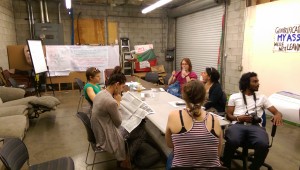 I would like to speak about the reasons for not partaking in street activism and that there various forms of activism besides those on the street. I mentioned above that I don’t believe activism to be the most effective approach to fighting against or for a social condition, but other reasons exist such as apathy and fear (much to lose). Activism is great and I advocate for it because I believe it provides a very clear and loud voice for the voiceless, however, rarely does street activism lead to tangible and obvious results. Results are usually thanks to a collaboration of programs and factors. Moving away from the effectiveness argument, people don’t participate in street activism mostly because they don’t care about the protested issue at hand or they don’t care about the person in need of an advocate. The second reason regards culture and class. There exist a significant portion of people worldwide and the vast majority of Americans who are privileged. This means that they have opportunities and the needed support groups to assist them in time of need. Therefore, the majority of Americans and a percentage of the world, are afraid of what they can lose. They have a lot to lose and will then not do anything to compromise certain opportunities that benefit them.
I would like to speak about the reasons for not partaking in street activism and that there various forms of activism besides those on the street. I mentioned above that I don’t believe activism to be the most effective approach to fighting against or for a social condition, but other reasons exist such as apathy and fear (much to lose). Activism is great and I advocate for it because I believe it provides a very clear and loud voice for the voiceless, however, rarely does street activism lead to tangible and obvious results. Results are usually thanks to a collaboration of programs and factors. Moving away from the effectiveness argument, people don’t participate in street activism mostly because they don’t care about the protested issue at hand or they don’t care about the person in need of an advocate. The second reason regards culture and class. There exist a significant portion of people worldwide and the vast majority of Americans who are privileged. This means that they have opportunities and the needed support groups to assist them in time of need. Therefore, the majority of Americans and a percentage of the world, are afraid of what they can lose. They have a lot to lose and will then not do anything to compromise certain opportunities that benefit them.
My second writing point is that street activism is just one form of activism as a whole. Especially in today’s modern era of incredible technology. Twitter and online petition-signing and sharing are strong and influential methods through which many have actively participated in. These websites can and have given global voices to individuals to empower them and accomplish shared goals. Furthermore, activism can look like standing out against the crowd on an important issue to speak your mind despite the opposition that is present.
With these thoughts laid out, I initially thought that I didn’t find activism to be super effective, but I now see how and where it has worked (i.e. Arab Spring). Additionally, I believed that I did not participate in any form of activism since I have never protested or talking with people. However, my friends and colleagues here showed me that I do participate in forms of activism, whether it may work with at-risk youth in Salinas or signing an online petition to stop an oil pipeline. Technology has transformed activism, creating different methodologies of this larger concept. Knowing this, I feel better because I know that I participate in activism and can continue to do something.
Day Three: The Highs and Lows
Today we visited Skid Row and various organizations working to provide support (medical, mental-health, housing, reintegration) services for the homeless community living here. As a group, we walked through Skid Row multiple times throughout the day as we traveled from one organization to another. Through this, I was able to see the abject poverty these people are living in. My senses were constantly bombarded by strong aromas of urine, bad odor, and weed; people laying down and resting in filth; seeing dozens upon dozens of tents; and feeling the intense solar heat beat down on everyone (we spent the majority of our time in air-conditioned buildings. I saw people in arguing with others or yelling outbursts to themselves or no one in particular. Additionally, people had their entire life’s belongings in their small person sized tents. Although I couldn’t see what was in the tents, I couldn’t imagine it being much in such a small space. I grew up camping as a child and I would never be able to sleep in late while in a tent because it became a solar cooker, attracting a lot of heat and becoming an oven. I kept this in mind on this 90+ degree day while I saw many people sleeping in their tents noon and afternoon. Lastly, I saw and learned about the great mental health need of this Skid Row community. I don’t have a strong education or understanding of those suffering with mental illness so when I saw it today, I felt awkward and not really at ease since their needs are such a mystery to me. I didn’t know how to act or what to say when passing by them on the street so I chose to say hello if they were making eye contact with me, or I would ignore that person.
Seeing all this poverty, I couldn’t help but feel sad about the great hardships and difficulties these people endure. I wasn’t sad because my life was so great and I was intruding upon their space, but rather that their lives are so difficult and are full of so many obstacles and barriers, and seeing this first hand and very up close, I felt for them and found myself empathizing with them.
As we entered each organization, I observed the nice living spaces provided to those homeless who meet the requirements as well as the helpful services and programs that are provided to the clients. Observing these places, instilled in me a sense of hope for Skid Row residents. The places we visited may be the nicest services that are provided to the homeless, but the reality that these nice places are available to someone who has nothing, was very encouraging and even inspiring to me. I understand that the process and journey for a Skid Row homeless person to obtain housing with one of these apartments, is very difficult and slow, but the mere opportunity for them to have their own room, bed, kitchen, bathroom, and other components of living an independent life illustrates that something policy-wise is being done correctly and that this is something policymakers should emulate and reinforce.
The situation in Skid Row is bad and much work is required to effectively help the vast majority of the homeless here. However, I feel and have hope for this community that it will continue with its trend to safer streets, healthier citizens, and self-sufficient/independent individuals.
Day Two: Sunday: Achieving Peace Through Justice and Forgiveness?
Today we visited Dolores Mission Church (a Jesuit church) to attend mass. Afterward we were able to meet with a member of the church to learn more about its history and how it serves its community. While there, I heard about an incident where a young man drove into his ex-girlfriend’s house after a dispute, killing her and her baby as well as maiming a child. The young man was sentenced to prison, but the parents of the young woman who was murdered had found a way to forgive this man for what he had done, even going so far as to take the man’s family to mass with them one Sunday. I was shocked by the dramatic story but moved by the powerful example of forgiveness and its ability to create and strengthen community. With this story in mind, I also learned that Jesuit church focuses on justice within the community and this church in particular has a description inside saying, “If you want peace, work for it”.
 With the church located in a gang active area, this dichotomy of justice and forgiveness struck me. There are apparently 9 active gangs in the area and the church partners with Homeboy Industries to resolve conflict and bring peace to the surrounding communities. More directly, the church is a peace zone, offering support to victims and offenders. Transformation is a slow process and currently, most gang activities seem to be retaliations to a rival gang’s activities. This cycle of violence, I am assuming, is perceived as justice, to right the wrongs done on the members. Justice is pursued and unfortunately furthers the violence. In contrast, the church actively pursues justice on behalf of the community. I am struggling to understand how through pursuing justice, this church can achieve peace when it is not a government authority who can actively pursue justice through the legal system.
With the church located in a gang active area, this dichotomy of justice and forgiveness struck me. There are apparently 9 active gangs in the area and the church partners with Homeboy Industries to resolve conflict and bring peace to the surrounding communities. More directly, the church is a peace zone, offering support to victims and offenders. Transformation is a slow process and currently, most gang activities seem to be retaliations to a rival gang’s activities. This cycle of violence, I am assuming, is perceived as justice, to right the wrongs done on the members. Justice is pursued and unfortunately furthers the violence. In contrast, the church actively pursues justice on behalf of the community. I am struggling to understand how through pursuing justice, this church can achieve peace when it is not a government authority who can actively pursue justice through the legal system.
Coming back to the story about forgiveness, this seemed key to achieving peace and transforming the community. This family was able to forgive an unbelievable pain and trauma and through doing so create a relationship and build a bridge between them and the man’s parents instead of a barrier. This forgiveness approach reminded me of the Truth and Reconciliation Commission in South Africa where “justice” was not necessarily achieved, but forgiveness and healing were, thereby leading to peace.
Reconciling the church’s “mission” and their actions, I understood the Dolores Mission Church to be pursuing justice through forgiveness because this is the way to right the wrongs. Forgiveness can put an end to a conflict and prevent further bloodshed and free/empower victims to actively take part in the conflict resolution process. I look forward to exploring this further.
Justice through forgiveness to achieve peace.
Pre-Departure Thoughts & Expectations
So I am currently writing this in the middle of the night, essentially one day before leaving for LA to begin our fieldwork. I am feeling pretty excited to get to work, but what peaks my interest at this moment in time is living in downtown LA for a week. Although I am a California native, I have never lived in the downtown area of a metropolitan city before. The hustle and bustle will be an interesting experience and the short-term immersion will help me better understand how this structure affects poverty, homelessness, and violence.
I have been to LA before and have spent a few days there on vacation while in college. My last time was when I was there with my friend as a tourist and stayed with my friend’s Filipino family near/in Korea town (not exactly sure where it was). There I was exposed to the impacted infrastructure and the incredible diversity the city had to offer. I was also impressed by the strong communities that had formed, thereby influencing local businesses. I enjoyed my experience greatly, but I paid no heed to issues such as poverty, homelessness, or violence that were all around me.
Now I return not as a tourist but as a researcher. I will be viewing the world through this lens as well as those of a graduate student, a Christian, a development and human security practitioner, and others. My expectations for this trip are that I will notice many aspects to the aforementioned topics that I did not before; be personally challenged by who I meet, the things I see, and the situations I encounter; and learn something(s) that I can share with whoever is interested. T-minus 1 day.
Michael Lui
